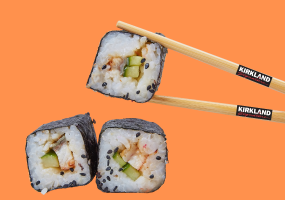
Nutrition bars and fortified breakfast cereals tout their many added grams. Cooking networks curate recipes high in it. There are even blog posts explaining every reason to add it to your diet. Over the past decade, fiber has become a star in the food world.
That's good, because none of us are eating enough. In fact, only 5 percent of Americans are reaching the recommended daily amount of 25 grams of fiber for women and 38 grams for men. And confusion surrounding this essential carbohydrate could be a reason why:
* First, even though fiber is key to healths digest, it isn't digestible.
* Second, it's a carb, which many folks, unfortunately, avoid, thinking of all carbs as created equal.
* Third, fiber comes in two forms-soluble and insoluble. Your body needs an adequate amount of both, and some fiber-rich foods only contain one type or the other.
So, yeah, we'll cut you some slack-fiber can be a bit unintuitive. But the health benefits are definitely worth it. Beyond maintaining regularity, fiber has been shown to maintain healthy cholesterol levels, help control blood sugar levels, aid in satiety by reducing hunger pangs, and support a healthy gut microbiome. Digestive health is a big deal, as studies may point to a gut-brain connection, which could affect stress levels, anxiety, even pain response. It may sound far-fetched, but just think about the butterflies fluttering around in your stomach before a first date or big presentation. It pays off to support digestive health through proper nutrition or a high-quality probiotic supplement.*
Here's a list of foods ranging from fiber-rich to good sources in five main categories. Pick out a mix of your favorites featuring both soluble and insoluble fiber. Who knows, your current eating habits may already give you an adequate amount of one form or the other.
High-Fiber Foods
These foods are all sources of either soluble or insoluble fiber, or both. As a rule of thumb, reaching for whole foods is the best route. Processing often reduces or eliminates fiber, even if the end product is fortified with other nutrients. When in doubt, check the label.
Grains and Bran - Seriously Insoluble Fiber-Filled
* wild barley | 17.3 grams of mostly insoluble fiber per ½ cup
* wheat bran cereal | 13 g of mostly insoluble fiber per ½ cup
* whole wheat bread | 11.5 g of mostly insoluble fiber per slice
* oats | 8.2 g of mostly insoluble fiber per cup
* whole wheat pasta | 6 g of mostly insoluble fiber per cup
* quinoa | 5 g of mostly insoluble fiber per cup
* air-popped popcorn | 3.5 g of mostly insoluble fiber per 3 cups
* brown rice | 4 g of mostly insoluble fiber per cup
Fruit - Soluble Fiber, with One Exception†
* avocado | 13 grams of mostly insoluble fiber per avocado
* raspberries | 8 g of mostly soluble fiber per cup
* pears | 5.5 g of mostly soluble fiber per pear
* apples | 4.5 g of mostly soluble fiber per apple
* bananas | 3 g of mostly soluble fiber per banana
* strawberries | 3 g of mostly soluble fiber per cup
* oranges | 3 g of mostly soluble fiber per orange
* pineapple | 2.3 g of mostly soluble fiber per cup
Vegetables - Soluble Fiber, Through and Through†
* artichoke | 7 grams of mostly soluble fiber per artichoke
* carrots | 4.6 g mostly soluble fiber per cup
* beets | 3.8 g mostly soluble fiber per cup
* brussels sprouts | 3.3 g of mostly soluble fiber per cup
* kale | 2.6 g of mostly soluble fiber per cup
* broccoli | 2.4 g mostly soluble fiber per cup
* spinach | 1.6 g of mostly soluble fiber per cup
* tomatoes | 1 g of mostly soluble fiber per tomato
Legumes - Positively Packed with a Mix of Fiber
* pinto beans | 15.4 g of mostly soluble fiber per cup
* black beans | 13.8 grams of soluble and insoluble fiber per cup
* lentils | 12.2 g of soluble and insoluble fiber per cup
* kidney beans | 11 g of mostly insoluble fiber per cup
* fava beans | 9 g of mostly insoluble fiber per cup
* garbanzo beans (chickpeas) | 8 g of mostly insoluble fiber per cup
* soybeans | 5.8 g of soluble and insoluble fiber per cup
* split peas | 3.4 g of mostly insoluble fiber per cup
Seeds and Nuts - Filled with Fiber in Every Ounce
* chia seeds | 11 grams of mostly soluble fiber per ounce
* flaxseeds | 7.7 g of mostly soluble fiber per ounce
* pumpkin seeds | 5 g of mostly soluble fiber per ounce
* almonds | 4.2 g of mostly insoluble fiber per ounce
* pistachios | 3 g of soluble and insoluble fiber per ounce
* macadamia nuts | 3 g of soluble and insoluble fiber per ounce
* sunflower seeds | 2 g of soluble and insoluble fiber per ounce
* chestnuts, roasted | 1.4 g soluble and insoluble fiber per ounce
†The skin of many fruits and vegetables contains high levels of insoluble fiber. Neat!
Written by Jake Wolford
*These statements have not been evaluated by the Food and Drug Administration. These products are not intended to diagnose, treat, cure, or prevent any disease.
* This is a contributed article and this content does not necessarily represent the views of foodworldnews.com









